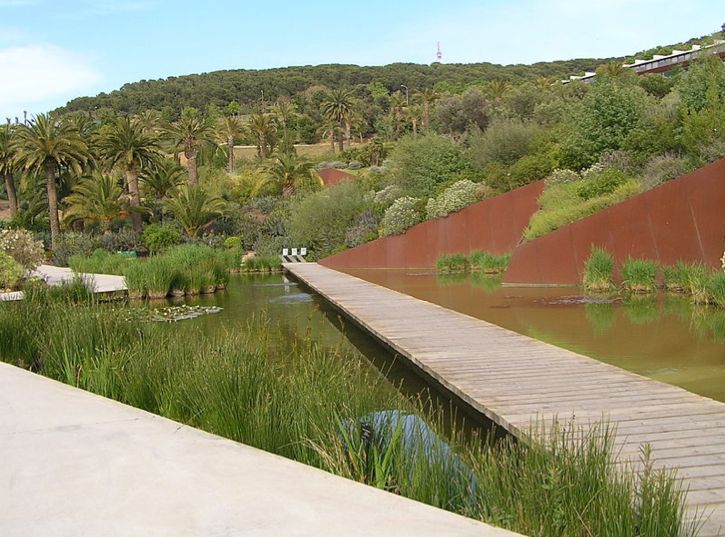Jardí Botànic, the botanical garden in Barcelona shows plants of the Mediterranean climate zones
In the Jardí Botànic, Barcelona’s botanical garden with a total size of 14 hectares, you can see the typical vegetation of six different zones with Mediterranean climate and the Canary Islands. The beautiful park between the Castell de Montjüic and the Olympic stadium comprises typical forests and shrubs from southern Australia, South Africa, Chile, California, the Canary Island and the three Mediterranean zones.
The botanical garden covers more than 14 hectares and is one of the largest parks in Barcelona. From here, you have a wonderful view of the Llobregat Delta, the urban area of Barcelona, the freight port and the Olympic sports venues on the Montjuïc.
The botanical garden features a representative selection of the flora in regions with Mediterranean climate all around the world. The Mediterranean climate is characterized by dry, hot summers. The rain mainly falls in winter, which is why it is also called winter rain climate. This climate zone is not exclusively found in the Mediterranean area, but also in other regions roughly at the same latitude as the Mediterranean area.
The vegetation in the areas with Mediterranean climate is mostly characterized by sclerophyllous plants like the olive tree, a typical Mediterranean plant.
The aim of the park, which opened in 1999, is among other things the conservation of rare plant species. About 1 500 plant species grow in the Jardí Botànic. Since the park is still quite new, most of the plants are relatively young. Some areas have not yet been planted in order to maintain a mixture of old and young plants. Still, the park is very pretty and there is a lot to be discovered.
The park was laid out by an interdisciplinary team led by the architect Carles Ferrater. In the Institute of Botany within the compound of the garden, there are changing exhibitions related to botany on display.
Mediterranean zones represented at the botanical garden
The Mediterranean climate in Southern Australia
The Mediterranean zone of Australia is the second largest one after the Mediterranean itself.
Cooler Mediterranean climate along the coast of Chile
In Chile, a narrow zone along the coast has Mediterranean climate. Since it is close to the Pacific Ocean, it is a little cooler and often there are foggy conditions near the coast. There are 2,400 endemic species here, 23 % of them are wide-spread. Characteristic plants along the coast are shrubs that are little fire-resistant as natural fires hardly ever occur in the Chilean Mediterranean zone.
California and its climate with stark contrasts
California’s coastal sector with winter rain climate is 100 to 2000 m wide and extends from Cape Blanco in the USA to Punta Baja in Mexico. San Francisco is the zone’s centre. There are 43,000 known endemic species, 25 % of which are wide-spread.
Equal precipitations all year long in South Africa
The smallest zone with Mediterranean climate is South Africa with 8,500 known species. Since natural fires occur regularly, a large number of species (85 %) is wide-spread.
It mainly rains in winter, but due to the monsoon, it is never entirely dry in summer either. The vegetation in South Africa mainly consists of shrubs and bushes.
The Mediterranean Basin
The land around the Mediterranean is referred to as the Mediterranean Basin. Altogether, there are more than 25,000 endemic species originating in Europe, Asia and Africa, 50 % of which are wide-spread. The plants, strong trees, shrubs and bushes, have developed remarkable regenerative abilities. They resist fire or regenerate quickly after fire, storm and extreme drought.
Book here the Barcelona Card
- <
Further parcs and places in Barcelona
Park Güell – Ramblas – Tibidabo – Mercat de la Boquerìa – Zoo – Beach – Port Vell – Font Màgica – Parc de la Ciutadella – Jardí Botànic – Parc del Laberint – Plaça Reial – Plaça Catalunya – Via Sepulcral Romana – Parc de Joan Miró – Plaça de Sant Jaume – Parc de L’Espanya Industrial – Cementiri de Montjuïc
Historic Botanical Garden | Museu de Ciències Naturals de Barcelona
The NAT Venues
Jardí Botànic de Barcelona
Historic Botanical Garden
The Jardí Botànic Històric (Historic Botanical Garden), a tiny gem among the gardens of Barcelona, nestles in the hollows of two disused quarry pits in the Foixarda sector of Montjuïc, behind the Museu Nacional d’Art de Catalunya (National Art Museum of Catalonia, MNAC).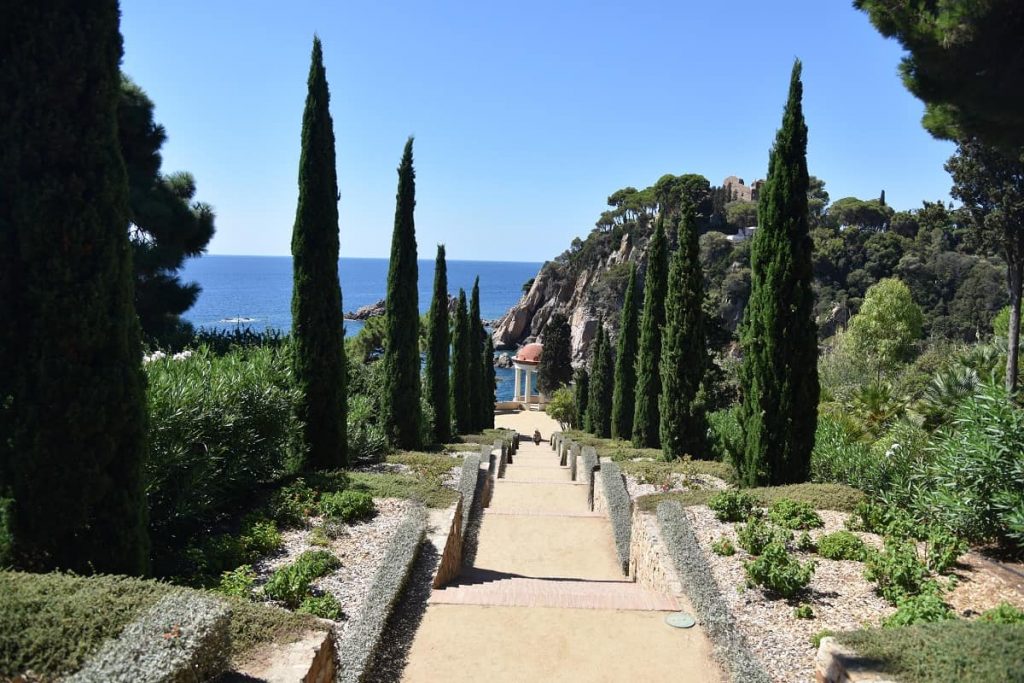
How to get here
Bus
150 Pl. Espanya-Castell de Montjuïc
Metro
L1 and L3 to Plaça Espanya. In Avinguda Maria Cristina, take the escalator up to the Museu Nacional d’Art de Catalunya (MNAC). The entrance to the Garden is behind the MNAC car park, between the escalators that go around the monument to Francesc Ferrer i Guàrdia.
By car
The entrance to the Garden by car is through Avinguda dels Muntanyans, behind the MNAC car park.
Opening times
All days:
- November, December, January: from 10 to 17 h
- February, March: from 10 to 18 h
- April, May, September, October: from 10 to 19 h
- June, July, August: from 10 to 20 h
Note: last admission half an hour before closing time.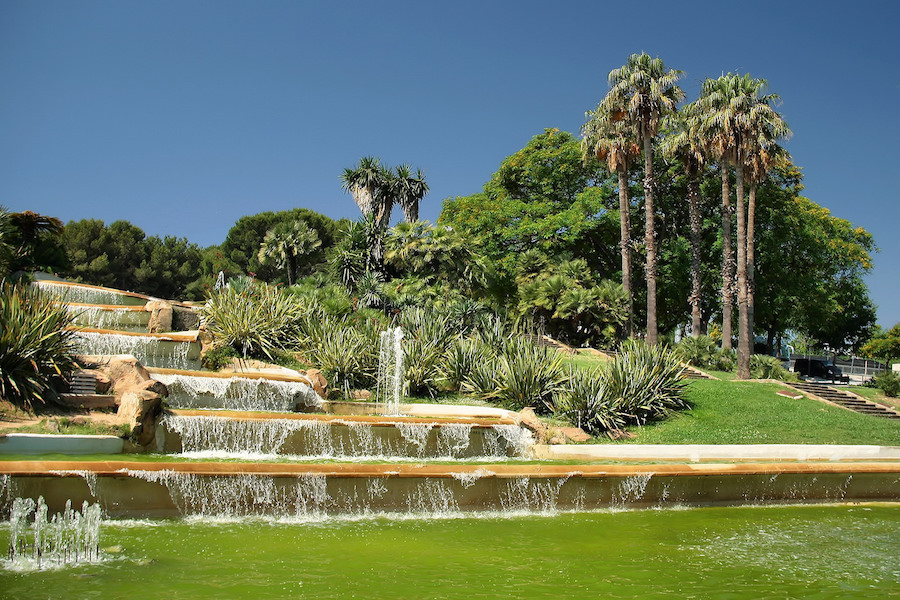
Closed
January 1, May 1, June 24 and December 25
Admission fees
Admission free
-
History
The 1929 International Exposition provided the first major opportunity to tackle the challenge of integrating Mount Montjuïc into Barcelona’s urban fabric. The plan was to transform the mountain into a large urban park – the second in the city after Ciutadella Park – large enough to house Catalonia’s main recreational and cultural facilities. Preparations for the Exposition led to the construction of several of the most outstanding gardens that now form part of the city’s green heritage.
Barcelona International Exposition. Aerial view of the installation of the ramaders del Regne. Photograph: Arxiu Fotogràfic de Barcelona.
The politician Francesc Cambó commissioned J.
C. N. Forestier to design the gardens around the Exposition buildings. Forestier exercised considerable influence on gardening in Barcelona, and to him we owe the design of some of the city’s finest gardens, as well as the introduction of numerous new plant species – particularly such species as Rosewood (Tipuana tipu), the Mmbú (Phytolacca dioica), the Jacaranda (Jacaranda ovalifolia) and the Brazilian Coral Tree (Erythrina falcata) and the establishment, through his follower, Nicholas M. Rubió i Tudurí, of a prestigious college of horticulture and landscape architecture.
As part of preparations for the Expo, Pius Font i Quer was commissioned to build a botanical garden. In 1930, with more determination than money, Font i Quer began to assemble a remarkable collection of endemic and rare plants, mainly originating from the Iberian peninsula, the Balearic Islands and Morocco.
In 1940, Antoni de Bolòs took over as director of the Botanical Garden, introducing new collections of plants from the Pyrenees and the Balearic Islands.
In the same year, the Institut Botànic was transferred to the Garden. Thanks to the work of Font i Quer and the Municipal Board of Natural Science Museums, the Institut Botànic now boasted the most outstanding herbaria and the best specialist botanical library in Catalonia.
The Historic Botanical Garden was officially opened to the public on 17 July 1941. Despite all the difficulties encountered at the time, some of the rarest plants from North Africa and Spain were successfully grown there. Thanks to the efforts made by the Garden, the perennial Menorca Loosestrife (Lysimachia minoricensis) was saved from extinction. Now grown in many botanic gardens, this species was reintroduced to natural habitats in 1954, the year that Antoni de Bolòs began and announced the first replanting in the Iberian peninsula of a species that was extinct in its natural habitat.
In 1986, the need to construct access routes to the new Olympic facilities seriously affected the stability of its vertical walls, and the Garden was closed.
Later, restoration and consolidation works were carried out and the Sot de l’Estany sector only was re-opened to the public in October 2003. Since November 2004, Barcelona Metropolitan Area (AMB) has managed maintenance of the whole site. Today, more than seventy years since it was first planted, the Historic Botanic Garden proudly shows the excellent results obtained since it was established: a magnificent display of plant life of the most exceptional size and quality.
Jardí Botanic de Barcelona. Barcelona Botanical Gardens
Page Content
If you want to get away from the bustling streets of Barcelona, check out the charming Botanical Gardens. Nestled in a picturesque setting on the hillside of Montjuic, this green oasis provides you with a peaceful space to relax and experience a variety of flora from all over the world, all in one enchanting location.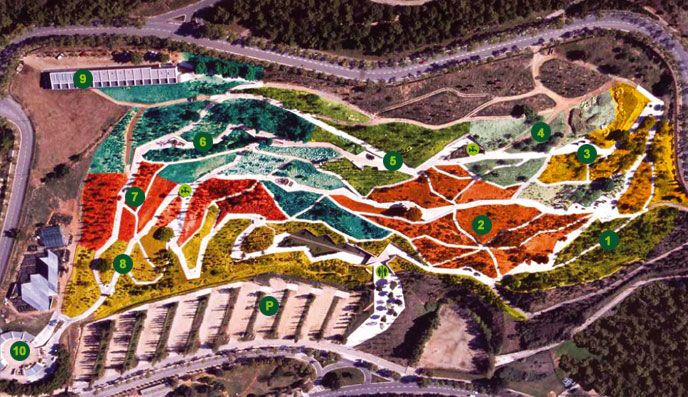
One sunny Sunday morning, I realized that I had nothing planned and decided to visit Barcelona’s Jardí Botànic Botanical Gardens, which is only a 10 minute walk from the Olympic Stadium.
It was a bit difficult to find the entrance to the gardens because it is poorly marked, however I have included a map below and hope you do not experience the same difficulties as I did.
| Beautiful orange flowers |
These gardens are an oasis of peace, tranquility and beauty beyond words. Plants are really little miracle workers, and here you will see them in all their glory. You will see plants with flowers of amazingly bright and so pure colors that you will be hypnotized. If you take the time to really look at each flower, and not just look at them, you will see the depth of pure natural crimson, orange, yellow, and other plants that create subtle colors such as soft, muted purples.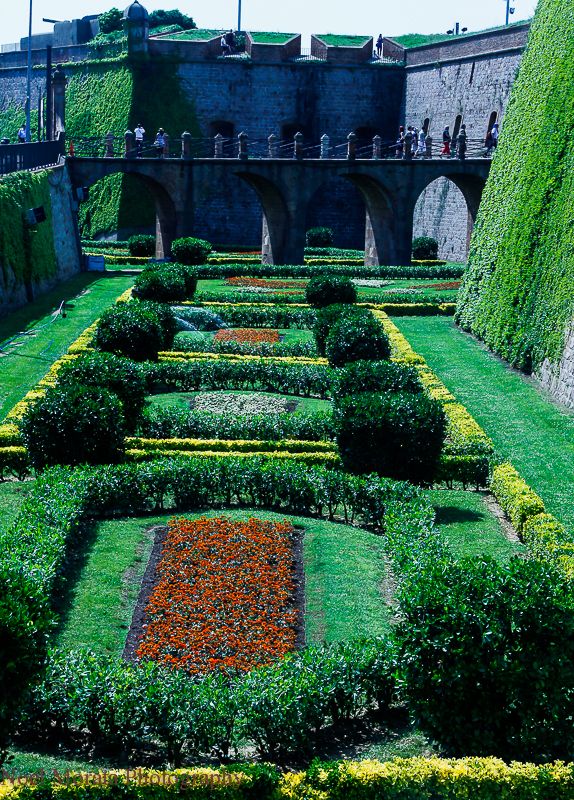
Colors aren’t the only thing you’ll be amazed at. The air in the various areas of the Botanical Gardens was filled with natural scents—sweet and soft scents, scents of lemon, lavender, and honey—aromas that give color another dimension of reality.
| Soft, muted purple flowers |
There is a “beehive” in the central part of the Botanical Gardens. At first I could only hear a gentle buzzing, but later I saw that the bees were collecting nectar from the pink flowers on the trees.
Up to this point, my impression of the bees was that they were noisy, restless creatures, however, these bees seemed to make almost no sounds and looked very peaceful, as they calmly carried out their duties.
After just a few minutes of walking through the Botanical Garden, I felt that I was in a Zen monastery, calmness, peace and purity. It is obvious that the caretakers of these botanical gardens truly love these plants.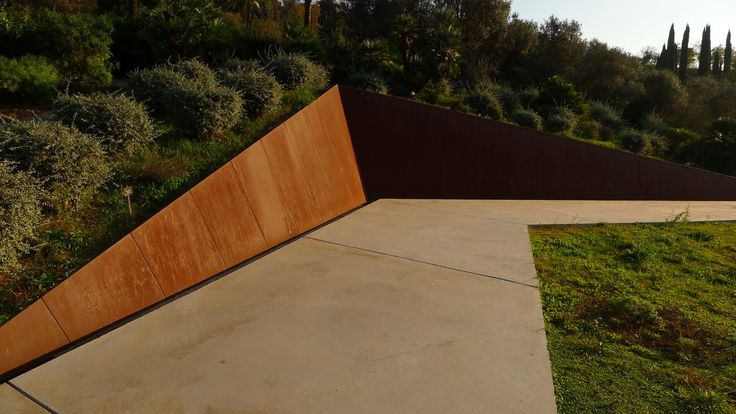
Walking through the elaborate gardens, you will be transported to different continents as each section features unique plants from different regions, including Mediterranean, California, South African, Australian and Chilean landscapes. This global flora tour is not only fascinating, but also serves as a gentle reminder of our planet’s incredible biodiversity.
The Botanical Gardens of Barcelona are not just a collection of beautiful plants; they also play an important role in nature conservation and scientific research. By exploring the gardens, you can appreciate the efforts being made to protect endangered species and promote environmental sustainability.
Jardí Botànic de Barcelona is a botanical garden located in the Montjuïc Park area. The park is home to Mediterranean plants from different parts of the world with a climate similar to that of Barcelona.
Location map showing walking directions to the Jardí Botànic (Botanical Garden) from the nearest metro stations.
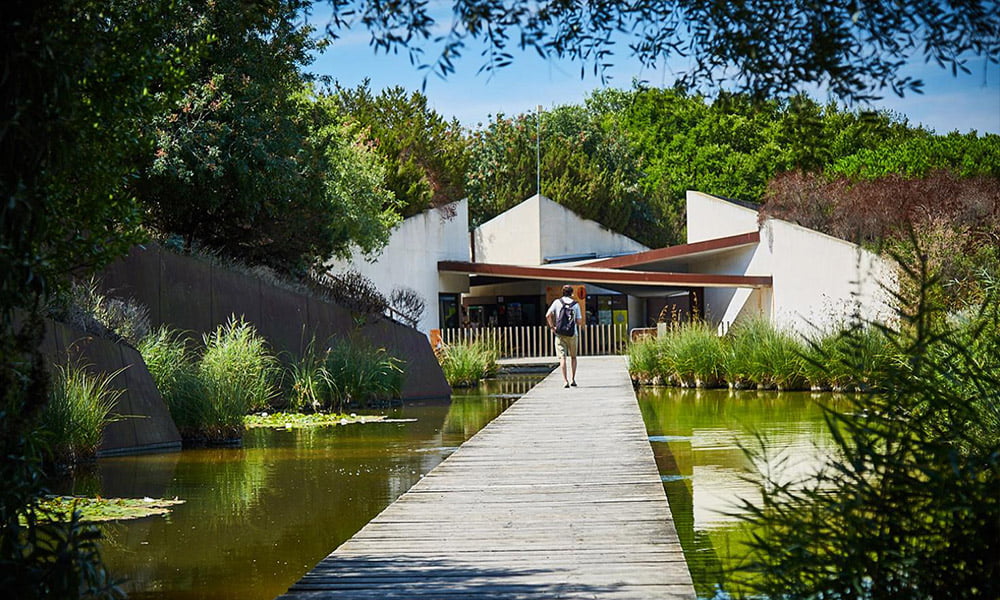
Parking Monterrey
Parking Gran Via
Parking PLAFER Abanto
Espana metro station
Espana metro station
Parking BSM Ciutat del Teatre
Parking BSM Rius i Taulet
Jardi Botanic de Barcelona
Carrer del Doctor Font i Quer, 2
This map is copyrighted and protected, copying is prohibited.
| The Botanical Gardens of Barcelona have a wide variety of beautiful flowers |
Below are the location, nearest metro station, car park, contact phone number and opening hours of the Botanical Gardens in Barcelona.
Jardí Botànic de Barcelona
Carrer del Doctor Font i Quer, 2
08038 Barcelona, España.
Tel: +34 93 256 4160
How to get to the Barcelona Botanical Garden
Metro: Poble Sec (Green Line, L3) and España (Green Line, L3)
Tourist bus stop Barcelona Bus Turistic
The nearest stop for the Barcelona Botanical Gardens is “Fundació Joan Miró” or “Anella Olímpica” on the “hop on hop off” sightseeing bus
Public transport – bus
Jardí Botànic: 13
Can Valero / Passeig del Migdia: 150
Car park
Parking near the Botanical Garden, next to the Olympic Stadium
| Green walkway through Jardi Botanic gives you an oasis of calm |
| From the Botanical Gardens of Barcelona you will enjoy incredible views of the city from |
Opening hours:
| Month | Day | Time |
|---|---|---|
| January 01 | Sunday | closed |
| January | Monday – Sunday | 10:00 – 17:00 |
| February – March | Monday – Sunday | 10:00 – 18:00 |
| April – May | Monday – Sunday | 10:00 – 19:00 |
| 01 May | Monday | closed |
| June 24 | Saturday | closed |
| June – August | Monday – Sunday | 10:00 – 20:00 |
| September – October | Monday – Sunday | 10:00 – 19:00 |
| November – December | Monday – Sunday | 10:00 – 17:00 |
| December 25 | Monday | closed |
Entrance fee: €5.
Access for people with disabilities: reserved parking, ramps, toilets
I really enjoyed the walk through the Botanical Gardens and would recommend it to anyone who wants to get away from the hustle and bustle and enjoy peace, quiet and beauty. You will also have wonderful panoramic views of Barcelona, such as the photos above.
As you stroll through the Barcelona Botanical Gardens, be sure to take the time to relax, take a deep breath and soak up the sights, smells and sounds of this wonderful reserve. In a city renowned for its architectural marvels, the Botanical Gardens offer a green respite that will leave you feeling refreshed and inspired.
For more information about the Barcelona Botanical Garden, visit the official website of the Jardí Botànic de Barcelona.
Website: Jardí Botànic de Barcelona
description and location on the map, how to get there and cost
Paths in the garden.
The Barcelona Botanical Garden is a century-old treasure, one of the many sights for which Catalonia’s most famous mountain, the hill of Montjuic, is famous.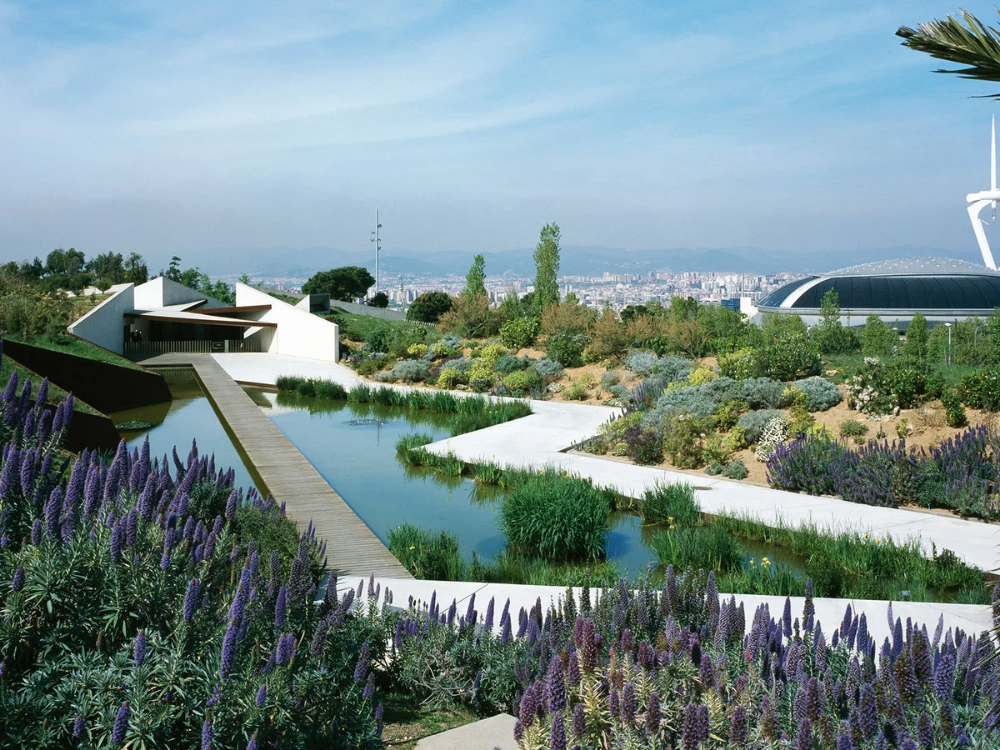
The park decorates the slopes of the mountain with hundreds of outlandish plants, even listed in the Red Book, and completely disappearing from the wild, as well as the extraordinary beauty of landscape design.
Tourists prefer to walk for hours along shady paths among tropical thickets, imagining themselves traveling in exotic Africa or distant Australia.
Contents
A bit of history
In 1991, an unflattering spectacle, the urban dump that spoiled the tourist image of Barcelona, was decided to end.
Two architects, Charles Ferater and José Canossa, volunteered to bring the idea to life. They were assisted by landscape designer Beth Figueras, as well as biologists, gardeners, dozens of talented workers.
The main task was not to remake the natural hill, but to use its advantageous aspects.
The successful decision did not come to the construction team immediately. But in the end, the slopes of the hill became an amazing projection of the amphitheater, the basis of which was the botanical garden.
And if the design took several months, the progress of the work dragged on for several years. The unique building was opened to visitors only in 1999.
Collection of miniature trees.
The whole world is on the steps of the hill
The Barcelona Botanical Garden is a stepped amphitheater on the slopes of Montjuic, covering an area of 14 hectares.
Even initially, the park was zoned into 87 territorial areas of eight landscape complexes of the world. Each one is a mini-topographical version of the authentic flora of Australia, Africa, the Mediterranean, the Canary Islands and other unique places.
Closer to the foot of Montjuic, in the lower part of the garden, there is a picturesque, artificially created lake.
Further, a little higher, several streams have overflowed and waterfalls are falling from a height.
(Source – Larisa Nikitina).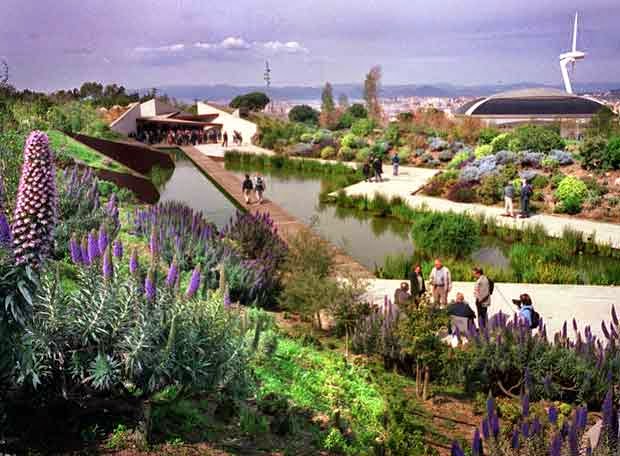
The whole garden is a continuous tropical forest. Here you can see:
- age-old Australian cypresses;
- California strawberry tree;
- South African succulents;
- impressive Chilean cacti.
Bonsai lovers come here. After all, there is a unique collection of miniature trees, numbering 210 copies.
And from the highest point of the garden, there is a breathtaking view of Barcelona!
Gazebo.
The Botanical Garden is considered not just a beautiful tourist attraction:
- extensive research activities are carried out here;
- endangered species of plants are grown, selection and breeding of rare representatives of the flora of different regions of the world is carried out;
- the employees of the garden devote a lot of time to educational work with youth and students.
Note to tourists
The park lies between the Olympic Stadium (which is located at the foot of the mountain) and the fortress of Montjuic (at the top of the hill), starting at the yacht pier.

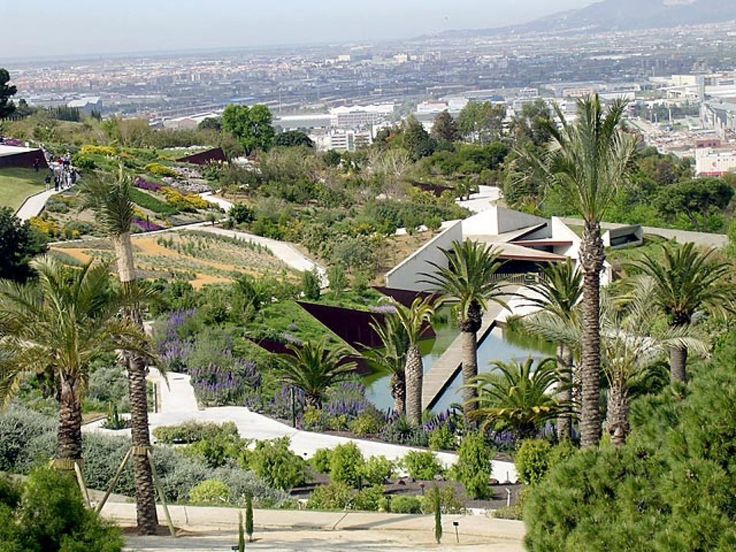 C. N. Forestier to design the gardens around the Exposition buildings. Forestier exercised considerable influence on gardening in Barcelona, and to him we owe the design of some of the city’s finest gardens, as well as the introduction of numerous new plant species – particularly such species as Rosewood (Tipuana tipu), the Mmbú (Phytolacca dioica), the Jacaranda (Jacaranda ovalifolia) and the Brazilian Coral Tree (Erythrina falcata) and the establishment, through his follower, Nicholas M. Rubió i Tudurí, of a prestigious college of horticulture and landscape architecture.
C. N. Forestier to design the gardens around the Exposition buildings. Forestier exercised considerable influence on gardening in Barcelona, and to him we owe the design of some of the city’s finest gardens, as well as the introduction of numerous new plant species – particularly such species as Rosewood (Tipuana tipu), the Mmbú (Phytolacca dioica), the Jacaranda (Jacaranda ovalifolia) and the Brazilian Coral Tree (Erythrina falcata) and the establishment, through his follower, Nicholas M. Rubió i Tudurí, of a prestigious college of horticulture and landscape architecture.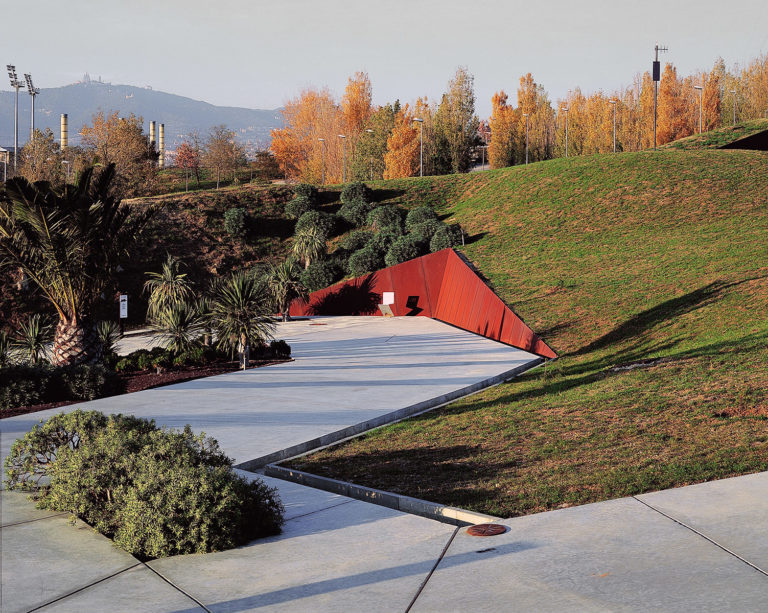 In the same year, the Institut Botànic was transferred to the Garden. Thanks to the work of Font i Quer and the Municipal Board of Natural Science Museums, the Institut Botànic now boasted the most outstanding herbaria and the best specialist botanical library in Catalonia.
In the same year, the Institut Botànic was transferred to the Garden. Thanks to the work of Font i Quer and the Municipal Board of Natural Science Museums, the Institut Botànic now boasted the most outstanding herbaria and the best specialist botanical library in Catalonia.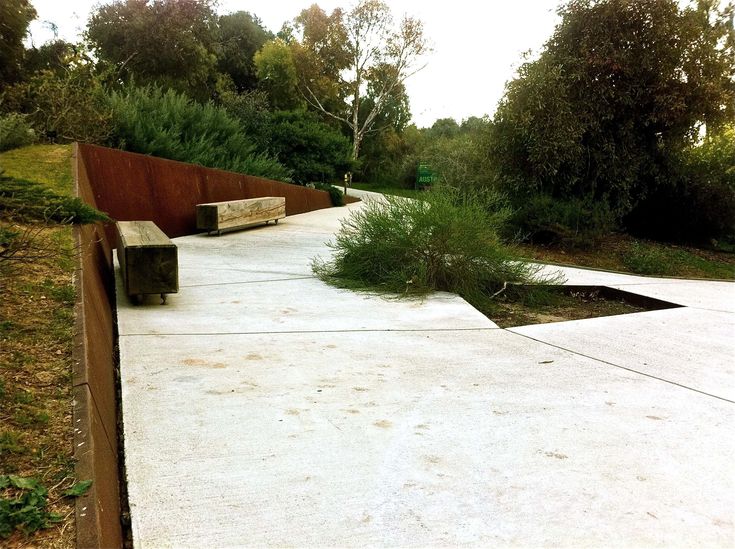 Later, restoration and consolidation works were carried out and the Sot de l’Estany sector only was re-opened to the public in October 2003. Since November 2004, Barcelona Metropolitan Area (AMB) has managed maintenance of the whole site. Today, more than seventy years since it was first planted, the Historic Botanic Garden proudly shows the excellent results obtained since it was established: a magnificent display of plant life of the most exceptional size and quality.
Later, restoration and consolidation works were carried out and the Sot de l’Estany sector only was re-opened to the public in October 2003. Since November 2004, Barcelona Metropolitan Area (AMB) has managed maintenance of the whole site. Today, more than seventy years since it was first planted, the Historic Botanic Garden proudly shows the excellent results obtained since it was established: a magnificent display of plant life of the most exceptional size and quality.